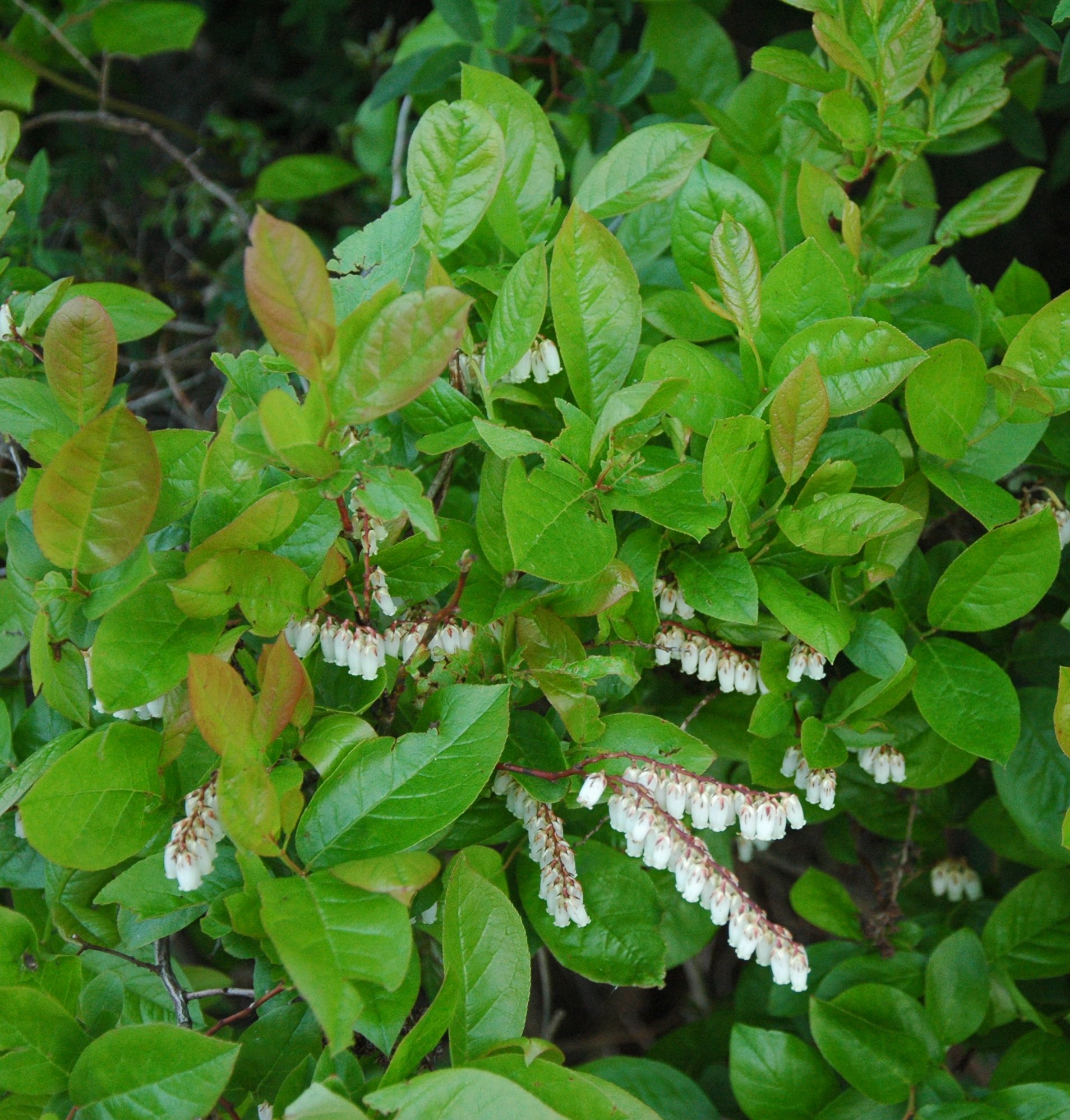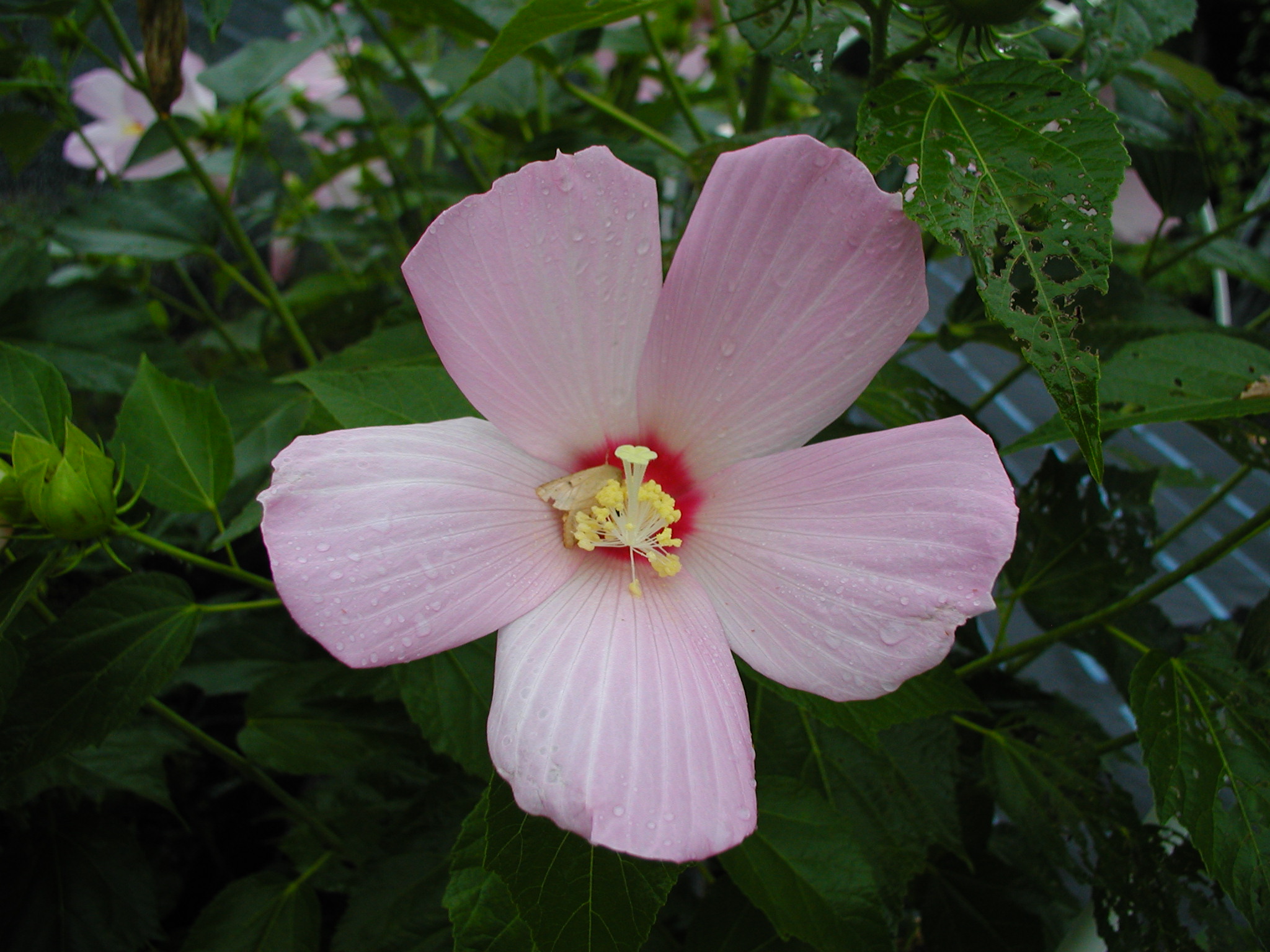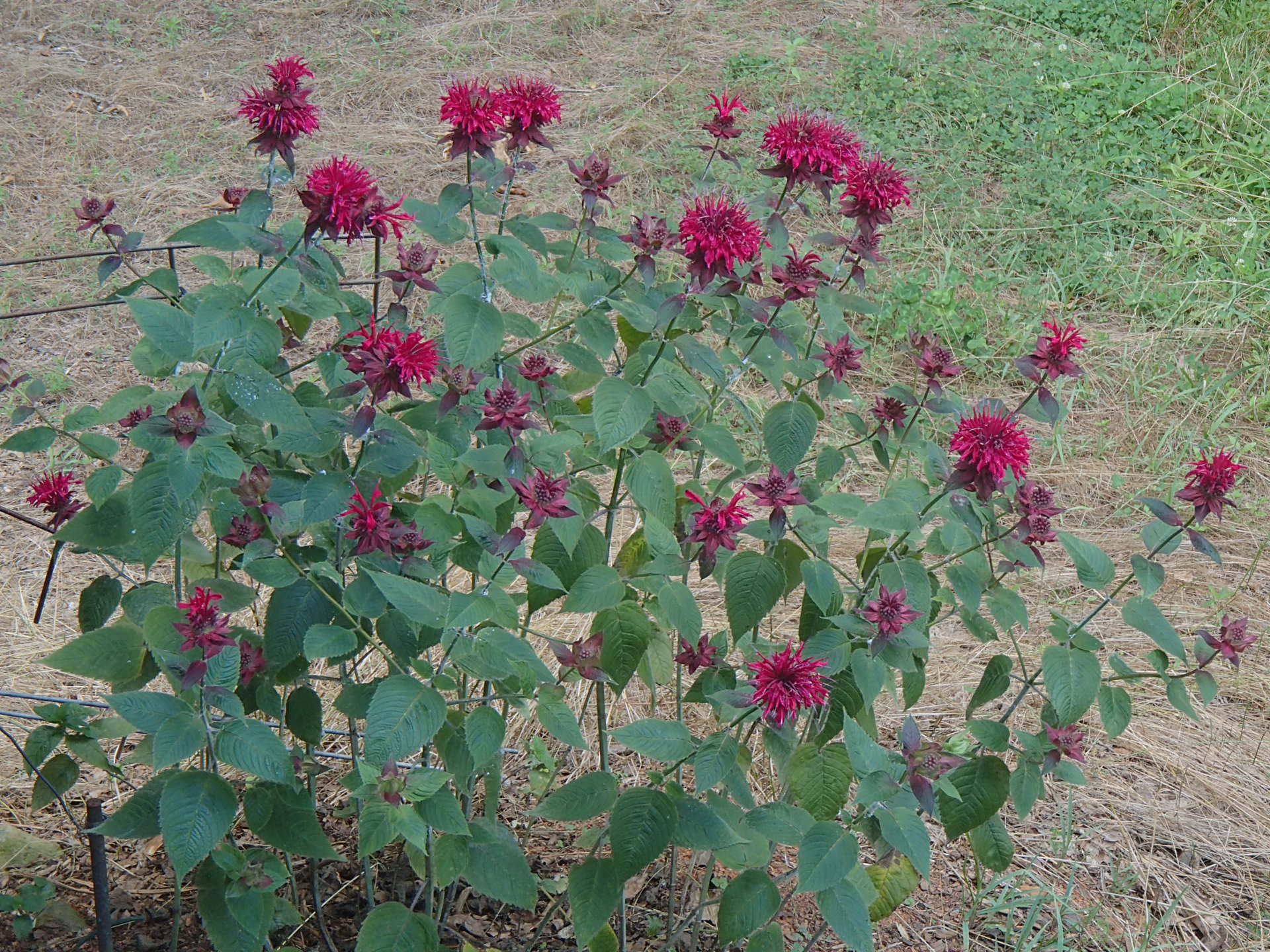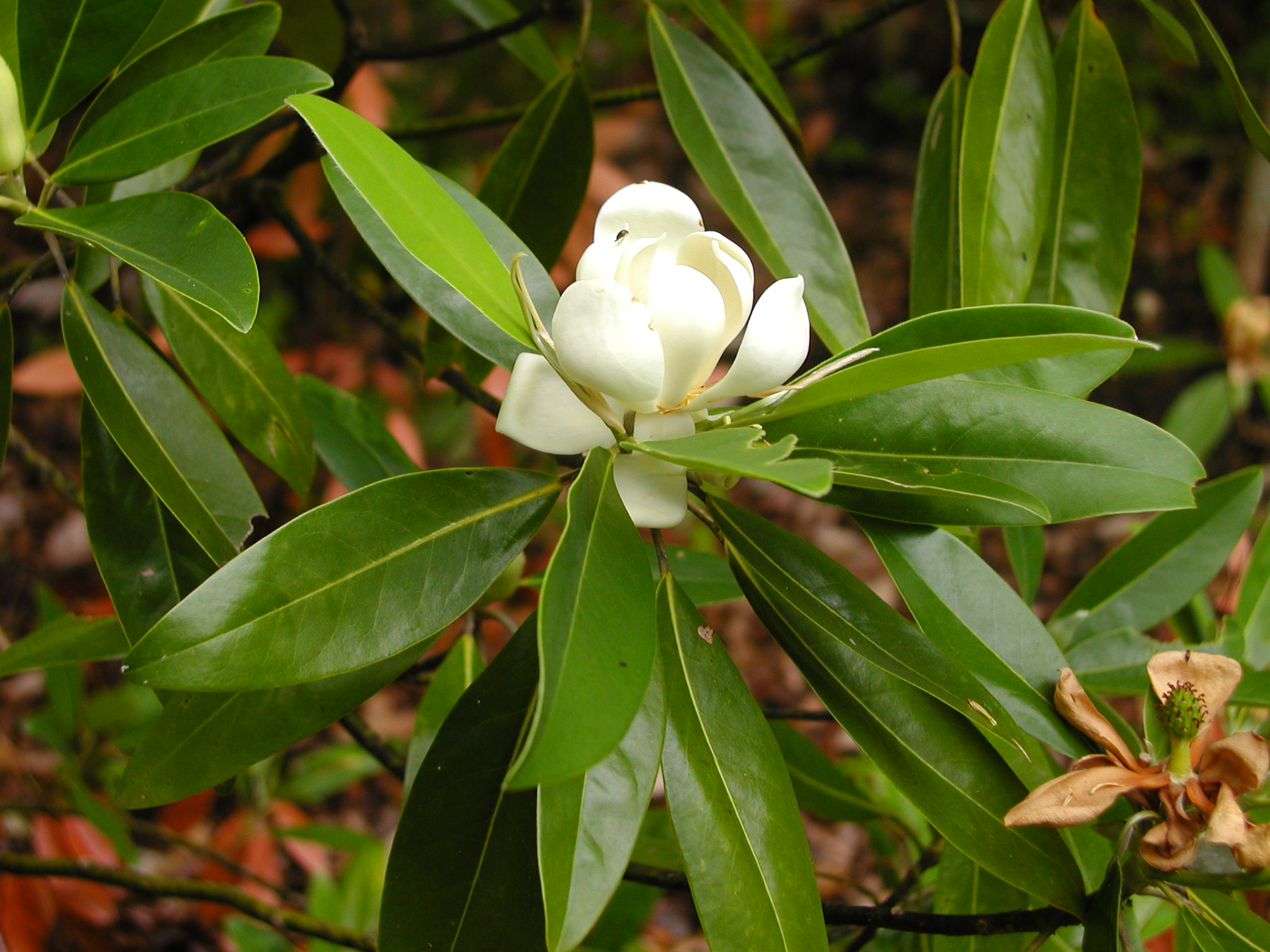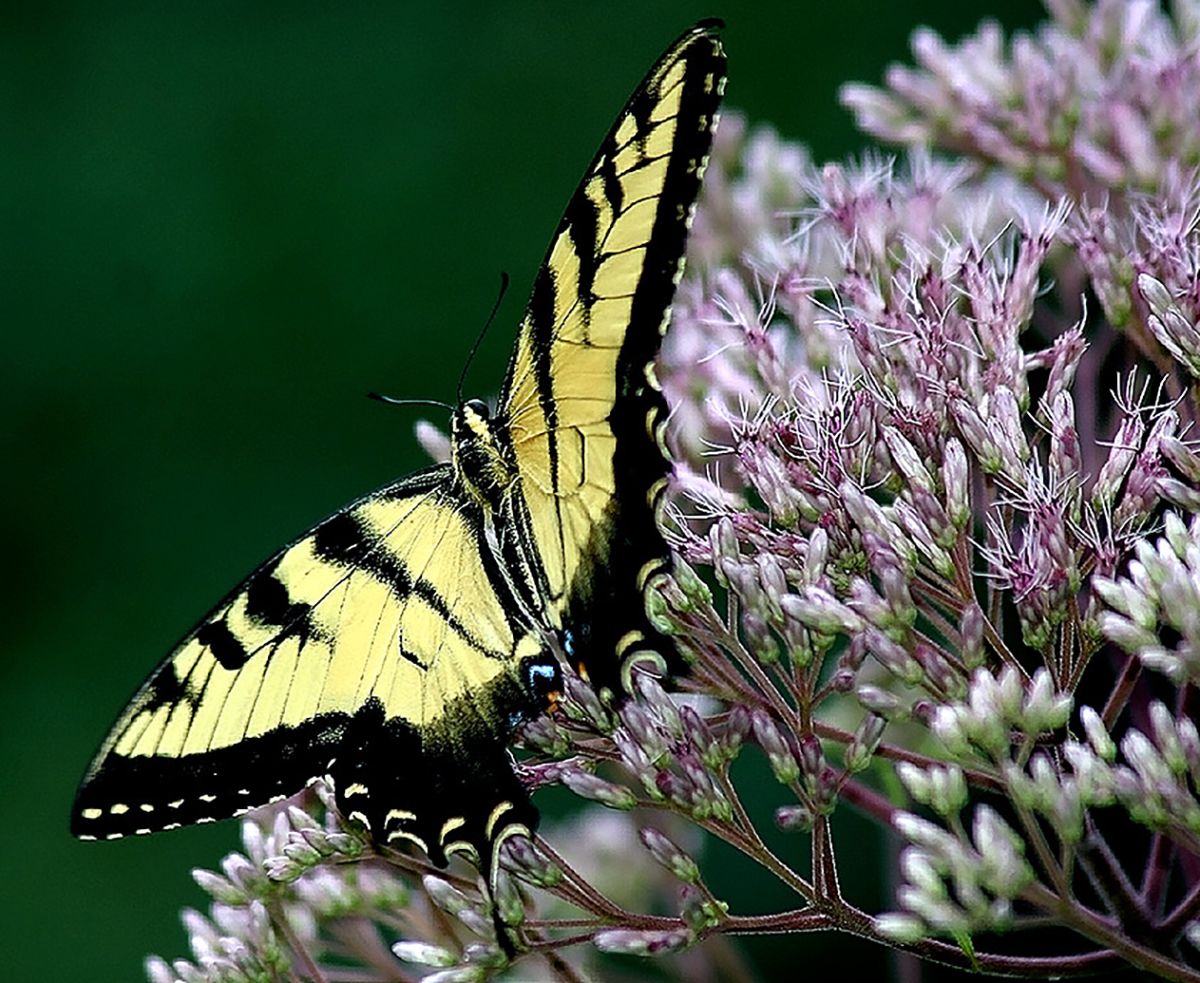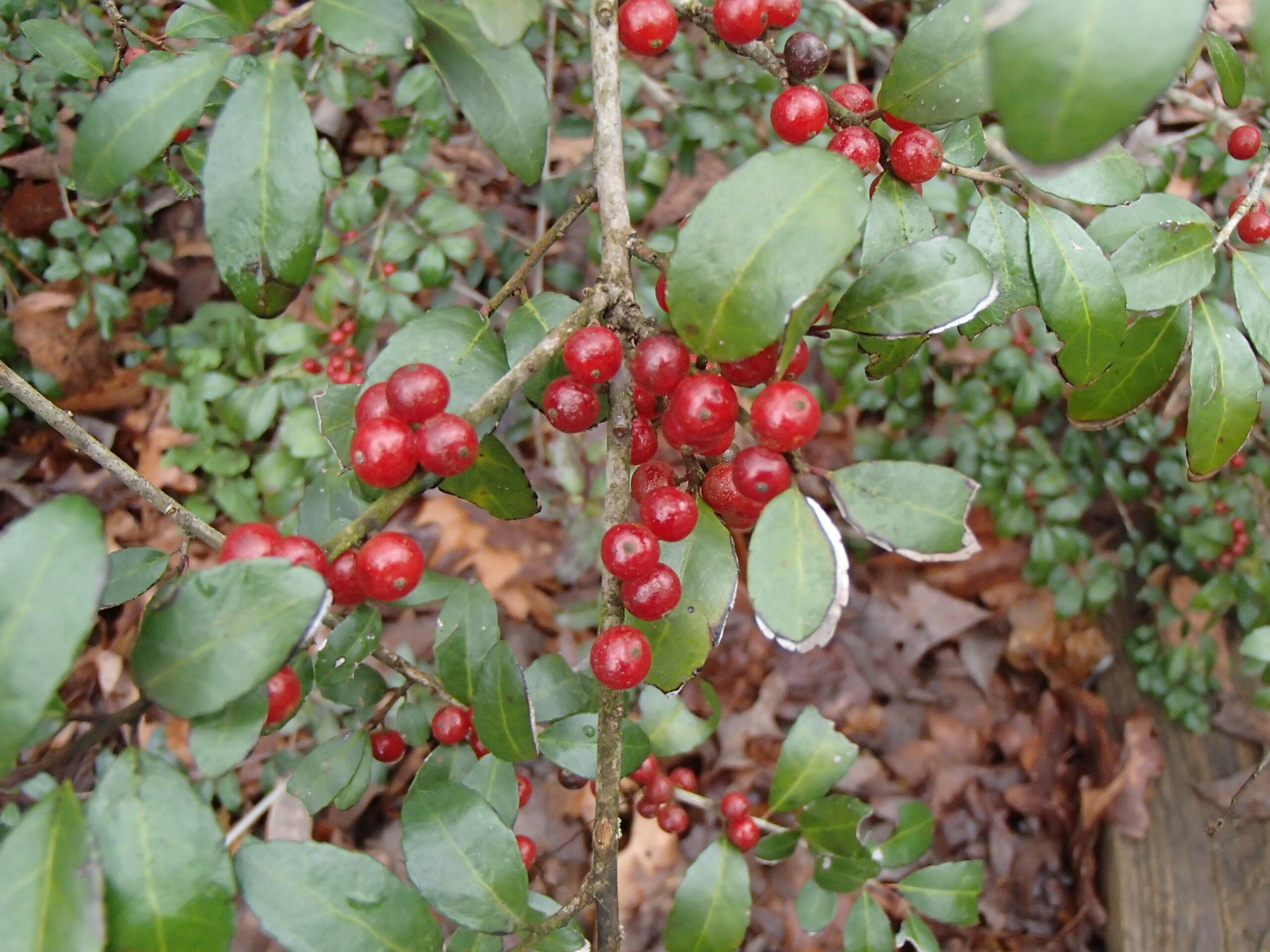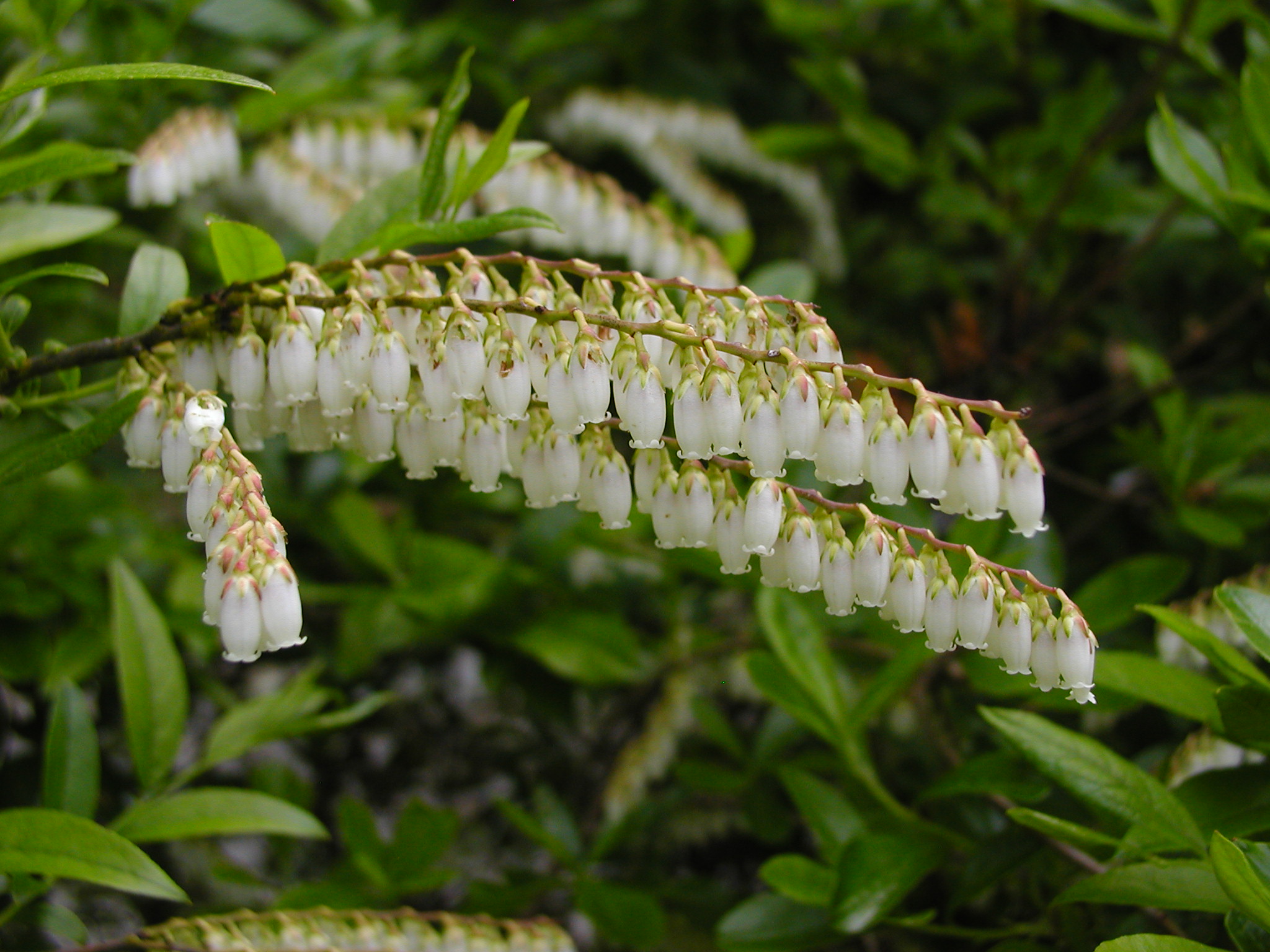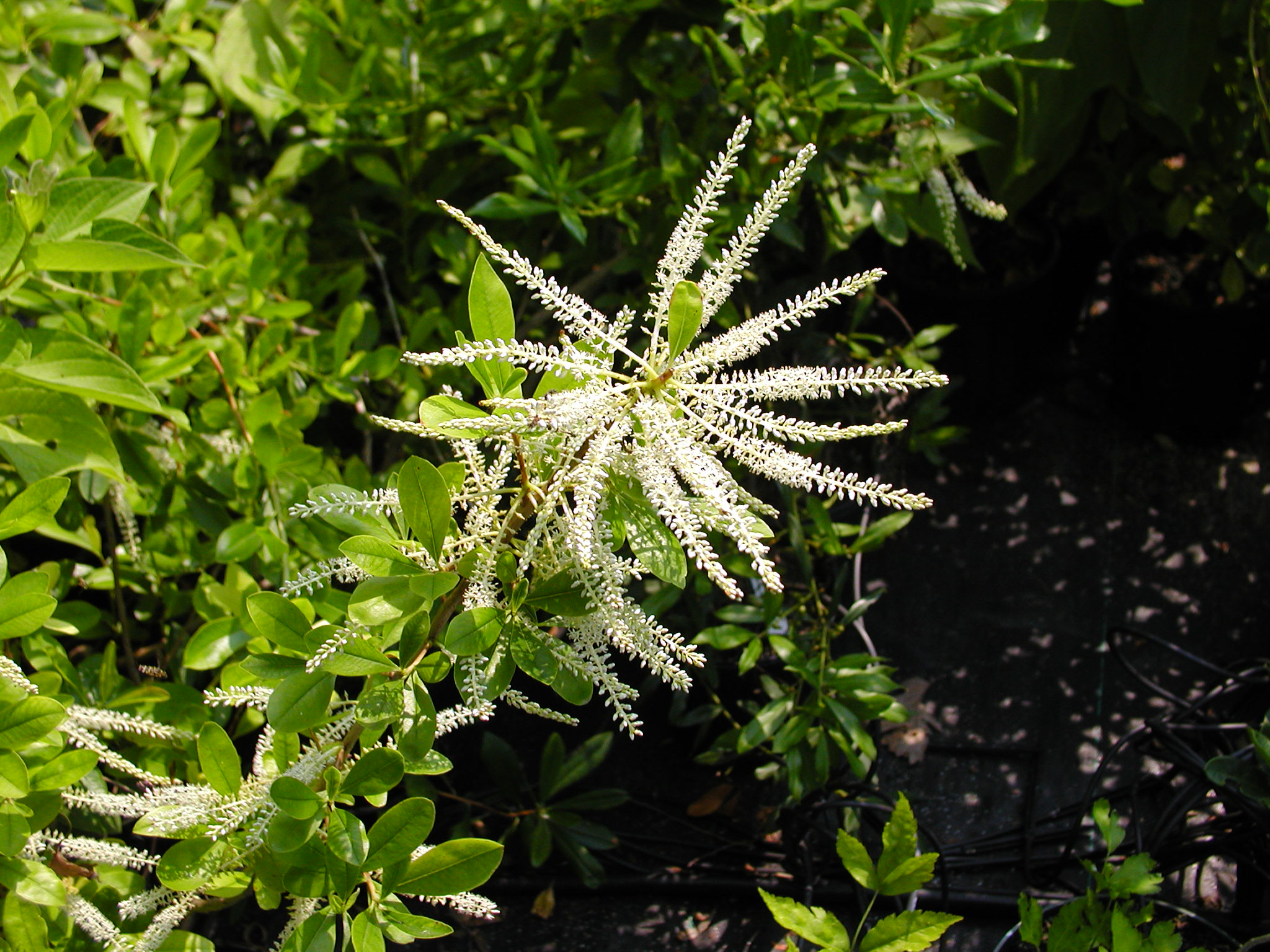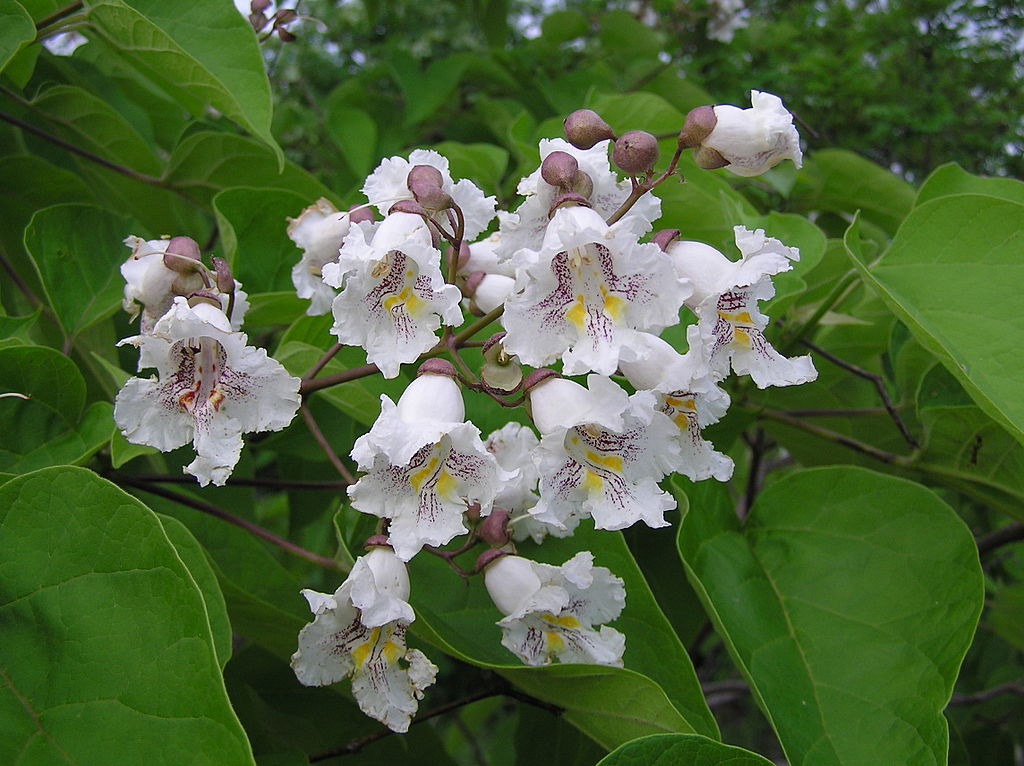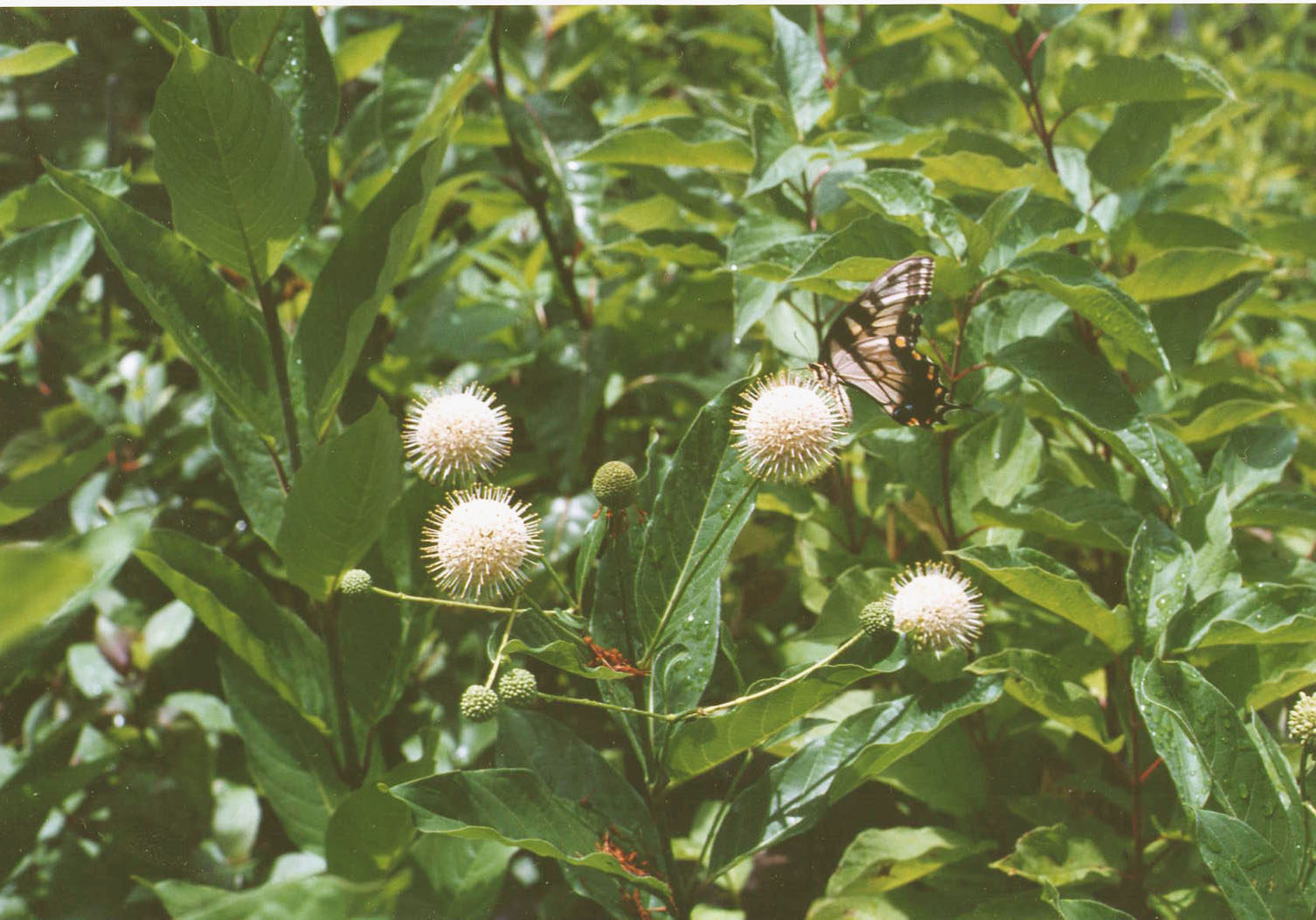NURSERY HOURS
Wednesday: 10-4 Thursday: 10-6 Friday-Saturday: 10-4 Sunday: 12-4
February 25, 2025
Sabatia kennedyana
Plymouth Rose Gentian is a perennial that occurs in wetlands. This low-growing plant blooms through summer and has pink radial shaped flowers which fade to white towards the middle, then yellow, surrounding a green disc. Flowers can have eleven or more petals. Seed pods start green then turn brown, containing lots…
February 25, 2025
Silphium perfoliatum
Cup Plant stands tall, ascending over its square stem with bright yellow radial flowers, resembling sunflowers. The leaves have a rough texture, have serrate margins, and are arranged opposite on the stems. Higher up the plant, leaves connect forming a cup, giving this plant its common name. Rainwater fills these cups,…
January 24, 2024
Chelone glabra
Chelone glabra, also referred to as White Turtlehead, is a clumpy, erect, leafy stemmed perennial in the Plantaginaceae family. It is most commonly found in moist areas along stream banks, open woodlands and swampy areas. It prefers full sun to part shade and grows 2-3 feet tall. The white and…
January 24, 2024
Rhynchospora colorata
Narrowleaf Whitetop Sedge is an evergreen, grass-like perennial native to North America. It is typically found in coastal areas, dunes, swales, and ditches. It tolerates a variety of soil types, although it does prefer for conditions to be particularly moist to wet. It can grow in full sun to part…
January 24, 2024
Carex lurida
Lurid Sedge is an evergreen perennial in the Cyperaceae family. Although evergreen, it does appear duller in the hotter months of summer. This sedge prefers full sun to part shade and likes soil that is moist to wet. Being that it prefers wetter soils, that makes it a great addition…
January 24, 2024
Carex grayi
Gray’s Sedge is an ornamental sedge in the Cyperaceae family. It is characterized by its spiked club shaped seedheads, which start green earlier in the season and slowly turn brown. Gray’s Sedge likes full sun to part shade and can handle wetter soils, making it fit right into a rain…
January 24, 2024
Carex bicknellii
Prairie Sedge is an early spring blooming perennial in the Cyperaceae family. It can handle a variety of moisture conditions, but it can handle dry soil better than most other sedges. This sedge prefers full sun to part shade and is a cool season grower. It makes a great candidate…
January 24, 2024
Boltonia asteroides
False Aster is a fall-blooming perennial in the Asteraceae family. White daisy-like petals, sometimes with pale pink or purple streaks, surround the bright yellow center. The leaves are evergreen, and a silvery green, lanceolate, and opposite. It thrives in full sun, but will also handle part shade. Over time it…
January 24, 2024
Viola sororia
Common Blue Violet is a semievergreen short lived perennial in the Violaceae family. This plant readily self-seeds, making it a good groundcover. It also handles a bit of foot traffic, so can also be considered as a lawn alternative. The leaves and flowers are edible, and can be eaten raw…
January 24, 2024
Styrax americanus
American Snowbell is a deciduous ornamental shrub in the Syracaceae family. This is a fragrant and dense shrub, making a great addition to a patio or as a privacy screen. The white fragrant bell-shaped flowers attract many pollinators, and it is a host plant for the Promethea Silkmoth. American Snowbell…
January 24, 2024
Chasmanthium latifolium
Part of the Poaceae family, River Oats shimmers beautifully in the wind throughout summer and fall. This ornamental grass is deciduous and blooms from June through October, showing spiked panicles that start off green, fading to tan, then finally to purplish copper. Not only do birds and small mammals love…
January 24, 2024
Achillea millefolium
Yarrow is a deciduous perennial in the Asteraceae family. Enjoying full sun and a variety of moisture conditions, it is often found in meadows, prairies, and roadsides. Deer tend to avoid this plant due to its low toxicity, so keep that in mind when planting if you have pets. Yarrow…
January 24, 2024
Tradescantia virginiana
Virginia Spiderwort is a lovely perennial in the Commelinaceae family that comes in shades of blue and purple. Although it prefers soil on the wet side, it can handle both full sun and full shade. Virginia Spiderwort has edible flowers that have sometimes been used in teas. It makes a…
January 24, 2024
Physostegia virginiana
Obedient Plant is a perennial in the Lamiaceae family that you may want to consider if you have a particularly wet area in your garden. Pink, lavender, or white tubular flowers in clusters will grace your garden in late summer to fall. Obedient Plant loves a full sun to part…
January 24, 2024
Iris versicolor
Blue Flag Iris is a perennial bulb in the Iridaceae family. It has blue-green sword-like leaves surrounding an erect stem topped with a showy blue or purple flower with six petals. This iris thrives in full sun to part shade and likes a higher moisture content in the soil. However,…
January 24, 2024
Panicum virgatum ‘Shenandoah’
Switchgrass ‘Shenandoah’ is a cultivar grass in the Poaceae family. Like most grasses, it prefers full sun to part shade. This grass is clumping, dense and can get up to seven feet tall if conditions are ideal, making it a good privacy screen option. Bluish green leaves with red tips…
January 24, 2024
Mimulus ringens
Allegheny Monkeyflower is a wet-loving herbaceous perennial in the Phyrmaceae family. Purple, pink, or blue flowers are shaped like monkey faces, hence the common name. This plant does best in full sun to part shade and prefers moist conditions with rich soil. Allegheny Monkeyflower would do well next to a…
January 24, 2024
Illicium parviflorum
Yellow Anise Tree is a broadleaf evergreen shrub or small tree in the Schisandraceae family. This woody shrub can get up to 10 or 15 feet tall and has light green leaves that are fragrant when bruised. With its dense mounding habit, this species makes a great privacy screen or…
January 24, 2024
Filipendula rubra
Queen of the Prairie is a large perennial wildflower in the Rosaceae family. Preferring moist soil, it does well in bogs, rain gardens, and moist meadows. It can tolerate full sun, and even prefers it, as long as the soil does not dry out. The leaves are large and make a…
January 24, 2024
Illicium floridanum
Florida Anise Tree is a broadleaf evergreen shrub in the Schisandraceae family. This shrub or small tree can get to six or ten feet tall and would make a great hedge or border. Preferring part shade to deep shade, it does well in a shade garden, and the leaves can…
January 24, 2024
Gelsemium rankinii
Swamp Jasmine is an evergreen woody vine in the Loginaceae (Gelseminaceae) family. It is very similar to Carolina Jasmine, but this species prefers wetter soil. It blooms first through spring and again in fall. It does well in full sun to part shade, and makes a great privacy screen. Swamp…
January 22, 2024
Zenobia pulveralenta
Dusty Zenobia is a deciduous to evergreen shrub in the Ericaceae family. It likes full sun to part shade and can get up to ten feet tall in ideal conditions. In late spring to early summer, cream to white cup shaped flowers point downward, similar to blueberries. Dusty Zenobia can…
January 22, 2024
Saururus cernuus
Lizard’s Tail is a stunning deciduous perennial in the Saururaceae family. Blooming in summer, it has a unique appearance. Little fragrant white flowers cluster on a drooping spike, attracting small pollinators. Lizard’s Tail frequently occurs in wetlands, making it a good candidate for areas in your garden that are prone…
January 22, 2024
Ampleaster carolinianus
Climbing Aster is a deciduous woody vine in the Asteraceae family. This plant can handle a variety of soils and moisture conditions, and is deer resistant too! Pink to lavender flowers bloom in late fall, making it the final bang of the growing season. With its dense growing habit, it…
January 22, 2024
Juncus effusus
Common Rush is an evergreen rush in the Juncaceae family. Green basal sheaths surround the stem of this plant, topped with yellow to copper spiky irregular cymes. Common Rush needs full sun and moist soil to thrive. It would do well in a container as long as it’s well watered.…
January 22, 2024
Coreopsis gladiata
Coastal Plain Tickseed is a deciduous perennial in the Asteraceae family. Bright yellow rays surround a purplish brown disk in summer, but it can bloom longer. Full sun to part shade is this plant’s preference, making it good for a meadow or sunny location. Naturally occurring in wetlands, this species…
January 22, 2024
Carex radiata
Eastern Star Sedge is a cool season grass in the Cyperaceae family. Growing in shady areas, it is a great lawn alternative where sun-loving turf grasses won’t survive. This sedge grows well in wet soil, making it perfect for filling in a rain garden. In spring through summer, white achenes…
January 22, 2024
Caltha paltustris
Marsh Marigold is an herbaceous perennial in the Ranunculaceae family. Found naturally in wetlands, it would do well in a sunny wet location in your garden. Yellow flowers resembling buttercups show April to June. In spring, this plant does well with more sun, but would prefer shade from the hot…
April 10, 2022
Andropogon ternarius
Splitbeard Bluestem is an attractive grass that adds great winter texture to any garden, especially for the southern gardener. Native to open fields in the South, Splitbeard Bluestem is happiest in full sun, hot temperatures and poor soils. It can grow up to three feet tall with a spread of one…
November 14, 2021
Quercus michauxii
Swamp Chestnut oak is a tall tightly crowned oak with a very large trunk. The common name of the chestnut oak comes from the resemblance of the leaves to those of a chestnut. Generally growing between fifty and one hundred feet tall, the Swamp Chestnut Oak has been know to reach…
November 13, 2021
Packera aurea
Golden Ragwort is a very versatile flowering perennial member of the Asteraceae which we have found useful in various garden circumstances. It is native to the entire Eastern half of the U.S., and in North Carolina it is reported to occur in mountain and piedmont counties. While USDA says it occurs…
November 13, 2021
Lyonia mariana
Piedmont Staggerbush is a cute little shrub, averaging three to six feet tall. It is an upright shrub with alternate, simple, and oblong leaves. The flowers bloom in clusters of racemes of columnar-shaped, white to pink flowers. It grows well along marshes and shrubby swamps, but also wood edges and well-drained…
November 12, 2021
Kosteletzkya pentacarpos, previously known as Kosteletzkya virginica
Seashore Mallow is a lovely, salt tolerant herbaceous perennial (some call it a subshrub) native to the Eastern shore of the U.S. The toothed, roughly triangular leaves and stems are softly hairy with tiny stellate (star-shaped) hairs. An obligate wetland plant, it thrives in full sunlight and wet soil. It is…
July 1, 2021
Arisaema triphyllum
Jack in the Pulpit is easily recognizable and is a unique spring ephemeral. The fleshy stalk and leaves lend an almost tropical aura to the plant. This perennial plant is about 1-2′ tall and wide. It loves part to full shade in woodland gardens and moist to wet conditions. Flowering plants…
April 29, 2019
Helianthus ‘Mellow Yellow’
Swamp Sunflower is a clump-forming, upright, late-blooming perennial sunflower — the latest flowering of the sunflowers (October and even November). It is found in bottomlands, swamps, and other natural wet habitats as well as in disturbed wet areas, on roadsides and in ditches. It thrives in full sun in moist soils…
April 29, 2019
Hibiscus coccineus
Although Scarlet Rosemallow in nature grows in wet places (the Wetland Indicator Status is “Obligate”), this herbaceous perennial thrives in upland gardens, and should be invited to do so! Adjectives such as “statuesque” and “architectural” come to mind. If given a sufficiently large sunny space, Rosemallow will express its full natural…
April 29, 2019
Hibiscus laevis
This plant is not currently for sale. This is an archive page preserved for informational use. The Halberdleaf Rosemallow is a big (3-6 feet), wet-loving herbacious perennial found in a few coastal and piedmont counties in NC but which is much more common in the Mississippi River valley and midwestern…
April 29, 2019
Hibiscus moscheutos ‘moscheutos’
Crimson-eyed Rosemallow is a robust wetland herbaceous perennial native to most of Eastern North America up to New York. It is shrub-like, with multiple, unbranched stems 3-7′ in height. Large, single flowers occur in upper leaf axils, with delicate petals ranging from white to pink but always with a maroon “eye”.…
April 29, 2019
Hibiscus moscheutos ‘palustris’
This plant is not currently for sale. This is an archive page preserved for informational use. There is disagreement and confusion about whether Hibiscus moscheutos and Hibiscus palustris constitute separate species, subspecies, or varieties, and we are not in a position to clarify! We are proceeding with propagating and selling…
February 28, 2019
Viburnum nudum
Possumhaw Viburnum is a 12-15-foot tall (some report up to 20 feet) x 12-15-foot wide, deciduous, wet-tolerant shrub of surprising ornamental value found in Eastern states from Texas north to Canada. It ioccurs in all three NC zones, mountains, piedmont and coastal plain, though in the mountains the quite similar Viburnum…
February 28, 2019
Zizia aurea
Zizea aurea, or Golden Alexander, is an herbaceous perennial found in piedmont and mountain counties of NC but is much more widespread in the midwest, north central and northeastern states. It consists of 30-inch, branching, erect, reddish, ridged stems which, like others in the carrot family, are hollow between the nodes.…
February 28, 2019
Taxodium distichum
Bald Cypress is a stately and long-lived deciduous conifer found throughout the swamps and riparian areas of the southeast, famous for its knobby “knees” and flared or buttressed trunks. It is important for most of us non-swamp dwellers, though, because Bald Cypress can also thrive in well drained upland soils. Since…
February 28, 2019
Spiraea tomentosa
Our area (NC and surrounding states) represents the southern tip of the range for this shrub, which is much more common to the north. In NC and Va it occurs in some mountain counties and some coastal plain/lower piedmont counties. The common name “Steeplebush” reflects it’s pink steeple-like blooms in late…
February 28, 2019
Itea virginica
Iteaceae is a family of only one genus of trees and shrubs, and of the 27 species in that genus, Itea is the only one found in the U.S. (the vast majority of the others being from east Asia). Virginia Sweetspire, as often known as Itea, is a versatile and lovely…
February 28, 2019
Taxodium ascendens
Pond Cypress is a deciduous conifer of our Southeastern states which roughly resembles (and is considered by some to be a variety of) Taxodium distichum, or Bald Cypress (See our entry for T. distichum). There are similarities between the two, such as their amazing soil moisture adaptability from standing water to…
September 17, 2018
Sarracenia minor
The Hooded Pitcherplant, native to the bogs of NC, SC, GA and FL, is a smallish pitcherplant, 8-16 inches tall. The pitcher consists of a green tube or trap which expands gradually from base up towards the hood; then, in an unbroken line, the hood arches smoothly, closely and protectively over…
September 17, 2018
Sarracenia purpurea
Sarracenia purpurea, or Purple Pitcherplant, differs from (most, not all) other species in this genus in several ways. Its pitchers are decumbent rather than upright, squatty and with a large lip; they are open to the sky instead of being protected by a hood, and are therefore probably full of water…
September 17, 2018
Sarracenia rubra
Although the Sweet Pitcherplant has a fragrant, maroon-colored flower at the top of a leafless stem, usually taller than the pitchers (about 10 inches), it is not the flower that fascinates people. The hollow pitchers of this insectivorous perennial plant are leaves modified to passively capture small animal creatures. Insects attracted…
September 17, 2018
Pinckneya bracteata (formerly Pinckneya pubens)
Fevertree is a large, graceful, deciduous shrub or small tree valued in the landscape for its rich green foliage and a long lasting display of beautiful pink in midseason. While the actual flowers of the Fevertree are greenish yellow and inconspicuous, these are surrounded by large, showy, whitish to deep rose…
September 17, 2018
Polygonatum biflorum
Solomon’s Seal is a graceful plant which enriches the woodland haitat without competing with the larger specimens there. It grows slowly but surely in the deer-protected understory to be a beautiful show throughout the growing season. The individual plant is an arching single stem with alternate, shiny leaves and pairs of…
September 17, 2018
Rhododendron viscosum
Swamp Azalea is a shrub up to 8 ft tall at maturity with an upright, loosely branched, multi-stemmed habit and a tantalizing, musky floral scent in late spring. Clusters of very fragrant bright white (often with pink accents), trumpet-shaped flowers with five petals, slender tubes and elegant, exserted stamens appear in…
September 17, 2018
Sambucus canadensis (synonym Sambucus nigra ssp. canadensis)
Elderberry is a vigorous, beautiful shrub commonly observed on roadsides and in hedgerows and disturbed areas in most NC counties and most states as well. It is a a vigorous grower, 5-12′ in height and spread, with arching branches which support numerous flat-topped white flower clusters in mid-summer. These retain their…
September 17, 2018
Sanguinaria canadensis
A bright spring ephemeral and one of the first flowers to emerge in the brown, still-dormant forest, the Bloodroot is an exciting harbinger of wonderful things to come. The delicate white flower with prominent golden stamens emerges on a single stalk arising from a woody rhizome, opening during the day and…
September 17, 2018
Sarracenia x ‘Daina’s Delight’
‘Daina’s Delight’ is one of the largest and showiest of the carnivorous pitcherplants we sell at Cure Nursery, with beautiful pitchers up to 3 feet tall. The pitcher consists of a green to rusty red throat or tube, that begins the season deep red but later sports a striking white, ruffled…
September 17, 2018
Sarracenia ‘Dixie Lace’
‘Dixie Lace’ Pitcherplant is a hybrid, introduced by local NC botanists Larry Mellichamp and Rob Gardner. Technically, the lineage is: (Sarracenia leucophylla x Sarracenia rubra ssp. wherryi) x (Sarracenia psittacina x Sarracenia purpurea). A cross of two hybrid crosses! But do not be dismayed, the genes are local as all Sarracenias…
September 17, 2018
Sarracenia ‘Mardi Gras’
‘Mardi Gras’ is one of the most beautiful of the pitcher plants — an herbaceous perennial presenting as a sturdy clump of modified leaves (pitchers) averaging 1′ tall. The pitcher is an insect trap, consisting of an undulating, often flared, frilly hood with a striking pattern of deep rose veins and…
September 17, 2018
Sarracenia flava
Yellow Pitcherplant is an herbaceous perennial up to 3′ tall found in sandy bogs in the coastal plain regions of Virginia and south to Florida and west to Alabama. Like all pitcherplants, S. flava thrives in full sun. The long throat or tube is quite slender, and the hood is reflexed,…
September 17, 2018
Sarracenia leucophylla
White-topped Pitcherplant, according to Wikipedia, is not a N.C. native, but an introduction, actually endemic to Deep South gulf coastal areas. It is a popular pitcherplant because of its lovely coloration — with white pigmentation, delicately cut by green or red veins, on the hood and the uppermost part of the…
September 17, 2018
Monarda didyma
Beebalm is a showy herbaceous perennial herb in the Mint family, very popular in Southeastern gardens for its long bloom time and easy nature. Bright red, somewhat coarse flowers are supported by sturdy, three-foot tall, square stems in July and August here in the piedmont, making excellent cut flowers.Our southern Appalachians…
September 17, 2018
Morella cerifera
Wax Myrtle is an amazingly versatile evergreen shrub or small tree which is such a great wildlife plant that it could be useful for increasing the pollinators and birds in your yard. Its foliage is very fragrant, and evergreen, and the blue berries are attractive to people as well as to…
September 17, 2018
Nyssa sylvatica
This plant is not currently for sale. This is an archive page preserved for informational use. Blackgum is a stately, medium-sized hardwood tree extremely desirable for its spectacular scarlet fall foliage and its wildlife appeal. It is adapted to a very wide range of habitats from standing water to dry…
September 17, 2018
Onoclea sensibilis
Sensitive Fern is a very handsome, very vigorous, running deciduous perennial fern. It is “sensitive” only to the first frost in the late fall, and perhaps to drought — but very hardy otherwise! It is widely reported to be two- to three-foot tall and taller in wet soil, but we have…
September 17, 2018
Osmundastrum cinnamomeum
Cinnamon Fern is an ancient, widespread and handsome fern native to North and South America as well as to Asia. It is found in swamps and moist woodlands as well as in upland gardens, in acidic soils from wet to moist/well drained. The fiddleheads of the fertile fronds, covered with cinnamon-colored…
September 17, 2018
Lobelia cardinalis
Cardinalflower is a handsome wildflower known for it vibrant red (occasionally white or rosie pink) floral spikes on sturdy, upright stems three to four feet tall and occasionally taller. It is valued by gardeners not just for the deep scarlet color and relatively tall, erect form but also because it attracts…
September 17, 2018
Lobelia siphilitica
The Great Blue Lobelia is a colony-forming, clumping perennial which is well known for its long-lasting, deep violet-blue floral spires from late summer to mid-autumn. The deep blue floral racemes play exceedingly well against the dominant yellows of other fall garden greats, and draw their own share of butterflies, bees and…
September 17, 2018
Lyonia lucida
Shining Fetterbush (“lucida”) is a commonly encountered evergreen shrub of the south, 3-5 feet tall and wide (or occasionally taller), found mostly in counties of the Atlantic and Gulf Coastal Plains from Virginia south to Florida and west to Louisiana. The leaves are alternate, smooth, thick, and leathery. The sweetly fragrant…
September 17, 2018
Magnolia virginiana
Magnolia virginiana, or Sweetbay Magnolia, is a small tree or shrub at home in the Atlantic and Gulf Coastal Plains and piedmont as far north as New York.. With 3- to 5-inch, oval, leathery green leaves with silvery undersides, and beautiful, sweetly-scented, small (3″ wide) ivory flowers in spring and summer,…
September 17, 2018
Eutrochium dubium ‘Little Joe’ (formerly Eupatorium)
Coastal Plain or Dwarf Joe Pye, E. dubium, is a tough, rewarding late-season herbaceous perennial whose family must be represented in the native garden. It is very handsome, the fragrant mauve to pink flowers appearing in cone-shaped clusters on red stems in late summer and lasting through fall, similar in many…
September 17, 2018
Eutrochium fistulosum
Joe-Pye Weed is an impressive (six to nine feet), erect, sun-loving perennial which is found mostly in wet thickets and stream margins from Quebec to Texas. Leaves are lance-shaped and whorled around the hollow stem (a diagnostic character for the species). The stems, which are mostly unbranched, are green below with…
September 17, 2018
Helenium flexuosum
This plant is not currently for sale. This is an archive page preserved for informational use. Purple-Headed Sneezeweed is a winning native perennial, found in wet, sunny habitats in the Eastern half of the U.S. In NC, it is reported to occur in scattered counties in the mountains, piedmont and coastal…
September 17, 2018
Ilex verticillata
Winterberry is a handsome deciduous shrub, averaging twelve to fifteen feet tall, with gray, twiggy, horizontal branches and spectacular red berries in winter.. It is native to swampy, wet areas of Eastern North America. Winterberry prefers full sun and moist, well drained, acidic, organic upland soil. However, it can also tolerate…
September 17, 2018
Ilex vomitoria
The Yaupon Holly is a distinctive evergreen native holly found in coastal counties in NC and other Southeastern states over to Texas. It tolerates a whole range of moisture regimes (wet to dry), soil types and pH, sunlight conditions (full sun to shade, but more sun makes more berries), and is…
September 17, 2018
Equisetum hyemale
The genus of Scouring Rush Horsetail, or Puzzlegrass, is the only living genus of a class of plants which for over one hundred million years dominated the understory of late Paleozoic forests (Wikipedia)! And Puzzlegrass does, indeed, have a primitive look. It now favors wet areas along railroad embankments, stream banks…
September 17, 2018
Eubotrys racemosus
Sweetbells Leucothoe is a handsome, deciduous, colony-forming, understory shrub which is naturally found in the Coastal Plain and Piedmont swamps, bogs and wetlands of Southeastern states. It can be cultivated easily in upland sites as well, reaching up to ten feet tall in consistently moist and shady locations. Arching, mostly unbranched…
September 17, 2018
Clethra alnifolia
Sweet Pepperbush is a beautiful, multi-stemmed woody shrub native to our East coast from Nova Scotia and Maine down to Florida and over to Texas. In NC it is found in swamps and moist woods on the coastal plain and outer piedmont. Clethra is rhizomatous by nature, and if allowed, can…
September 17, 2018
Clethra ‘Ruby Spice’
‘Ruby Spice’ is a cultivar of one of our most beautiful native shrubs, Clethra alnifolia or Sweet Pepperbush. They are deciduous shrubs of medium stature with rich, dark green foliage, and flowers with head-turning, sensuous, honey-sweet scent in mid- to late-summer when few other shrubs are flowering. The flowers of ‘Ruby…
September 17, 2018
Clethra ‘Sixteen Candles’
Sixteen Candles’ Clethra is a more compact cultivar of Clethra alnifolia, a wet-tolerant and beautiful coastal shrub all along the eastern seaboard and southern coastal states. Like the species, ‘Sixteen Candles’ is long-blooming, having sweet-fragrant flowers in the heat of the summer against a rich, medium-to-dark green foliage. But the plant…
September 17, 2018
Conoclinium coelestinum
Blue Mistflower is a shrub-like herbaceous perennial native to the south-central and eastern portions the U.S. In NC, is is present in most non-mountainous counties. Growing two to three feet tall and as wide, it has opposite, triangular-shaped leaves and masses of tiny, whimsical, fluffy, bright blue-purple disc flowers in clusters,…
September 17, 2018
Cornus amomum
Silky Dogwood is a hardy, spreading shrub that grows in moist habitats, mostly by stream banks and wet lowlands in the eastern U.S. While attractive, its ability to draw wildlife to it is also a very strong attribute. It is a medium-size shrub, growing up to ten feet tall and wide,…
September 17, 2018
Cyrilla racemiflora
Swamp Titi is an extremely interesting and underused shrub or small tree for our area. It grows to perhaps 20 feet (more often 12-15 feet) and can be described as having both lustrous evergreen or tardily deciduous leaves and colorful fall foliage! Its trunk(s) and branches are very nicely contorted, with…
September 17, 2018
Dryopteris celsa
Log fern is a fertile, naturally occurring, semi-evergreen hybrid between D. ludoviciana (Southern Shield Fern) and D. goldiana (Goldie’s Wood Fern) with a range in central, eastern and southeastern U.S. Log fern grows rapidly with wide, shiny, deeply cut, dark green fronds and dark stripes along the central rib. The sori,…
September 17, 2018
Canna flaccida
This plant is not currently for sale. This is an archive page preserved for informational use. Golden Canna is a beautiful, wet-loving, long lived herbaceous perennial plant and is the only yellow Canna. It was originally described by William Bartram, who found it blooming along the rivers of coastal Georgia. It…
September 17, 2018
Catalpa bignonioides
This plant is not currently for sale. This is an archive page preserved for informational use. Southern Catalpa is a medium-sized (twenty-five to forty feet, sometimes taller) highly ornamental tree bearing large, heart-shaped leaves and strikingly beautiful flowers after about 6 years of age. The leaves are barely expanded in…
September 17, 2018
Cephalanthus occidentalis
Buttonbush is an open, woody, deciduous shrub usually 5-8′ tall (sometimes taller), with an irregular crown graced with many white, golf ball-sized, spherical flower clusters in June. The shrub is very ornamental, and the white, long lasting, pin-cushion like flowers are more often than not being visited by enthusiastic butterflies and/or…
September 17, 2018
Alnus serrulata
Tag Alder is a multi-stemmed, deciduous shrub or small tree found on stream banks and in wet meadows in Eastern North America (Main to Florida; as far west as Oklahoma, Missouri and Illinois). Leaves are alternate, elliptical, with serrated margins, deep green turning to yellow tinged with red in the fall.…
September 17, 2018
Aronia arbutifolia
Red Chokeberry is a charming, multi-stemmed, deciduous woody shrub native to Atlantic and Southeastern states. It is found in swamps and wet places, and is therefore very useful for wet areas, but is happy in upland gardens as well and established plants even tolerate drought. This shrub is hard to beat…
September 17, 2018
Asclepias incarnata
The Pink Swamp Milkweed, being a milkweed, is important support for the Monarch butterflies But it is also a stunning perennial wildlfower and therefore deserving of a place in the perennial border. Even though it is found in wet meadows and swamp margins, it is also happy in a well drained…
September 17, 2018
Betula nigra
River Birch is a graceful, medium-sized (fifty to eightyt feet) deciduous tree with an irregular, open, spreading crown. It is the most heat tolerant of the birches and the only birch that grows in lower elevations in NC. Although it is often found in floodplains and river bottoms, and tolerates wet…
About the author

Proin volutpat vitae libero at tincidunt. Maecenas sapien lectus, vehicula vel euismod sed
Categories
Popular Posts
Instagram
Follow us









